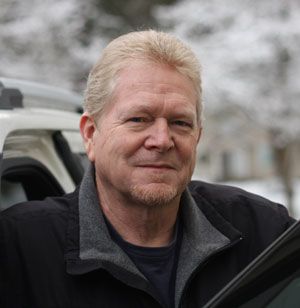Target zero: not a pipe dream
The ahead-of-its-time 2013 Washington state strategic highway safety plan, Target Zero, is getting a boost in reality. And it’s coming from the rapid advancement in self driving cars. Target Zero’s goal of reducing state highway deaths to none by 2030 has planned elements including education, enforcement, engineering and improvements in medical response.
Besides those efforts, however, the enormous research and development being devoted to driver assist features and robotic vehicles infers that lowering traffic fatalities to nil may be more than a pipe dream.
Automotive safety experts are now prognosticating that safety improvements, vehicle-to-vehicle connectivity and the promise of self-driving vehicles may forecast a previously preposterous possibility for the future of driving: the elimination of traffic deaths.
While not included in Washington’s 2013 proposal, the rapidly emerging technology being applied to today’s automobiles and beyond is expected to have a huge impact on safety. By mitigating human error on driven cars and eliminating it on driverless ones, accidents caused by lane departure, too-short following distances, distraction and other factors will wane or end.
Toyota’s Jeff Kuffner, chief technology officer at the Toyota Research Institute in Palo Alto, California, is among the group of traffic safety gurus who now believe in the possibility of virtually eliminating the 30,000-plus annual highway fatalities occurring in the United States.
Toyota, along with other manufacturers and technology startups, has earmarked multiple millions of dollars toward the goal. According to Kuffner, if the industry continues to move in the right direction, “the probability of being killed in an auto accident would be smaller than being killed by lightning.”
Though adopting the available technology will challenge many industry norms, the speed at which it happens will determine how soon lives will be saved. As an example of a hurdle, automakers will have to sell safety over performance. A question yet-to-be-answered is: Will customers desire robotic cars that don’t crash, but travel cautiously and obey traffic laws?
It’s not only self-driving cars that will enhance motorists’ collective safety. A score of other features like lane departure warnings, emergency autonomous braking and other driver alerts are available right now.
Mark Rosekind, administrator of the National Highway Traffic Safety Administration, says, “We are right on the technological cusp. We really have this totally new, really exciting chance to make a difference.”
The challenge is to get the technology into vehicles quickly and safely. “Everyone’s got their own view of what the future is going to be,” Rosekind says, “We’re watching the future being created right in front of us.”
Well ahead of Washington state, a policy written into Swedish law in 1997, Vision Zero, professes that there is no acceptable level of traffic fatalities, so the established goal is zero.
Sweden’s only major automaker, Volvo, has taken that message to heart by pledging that no one will die in an accident in a new Volvo by 2020. That’s a lofty pledge, but Volvo research and development head Peter Merkins stands by it, saying that continual system refinement and vehicle connectivity can make traffic death elimination a reality.
Two visions exist: One is the “chauffer” model, where the car drives itself without human participation, and the other is the “guardian angel” model, in which humans drive with the assist of computerized safety systems and communication.
For certain, whatever comes will lower fatalities toward the goal of zero.
Readers may contact Bill Love via e-mail at precisiondriving@spokesman.com.
